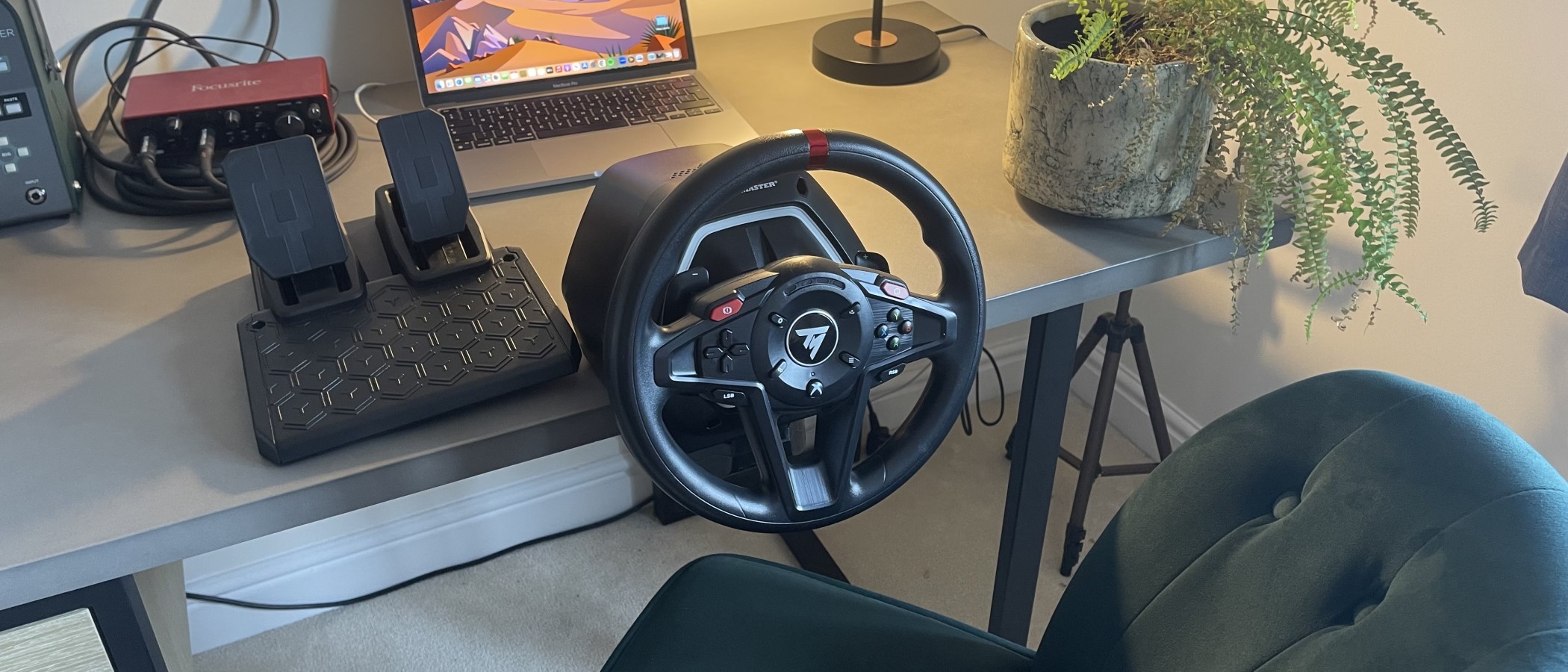GamesRadar+ Verdict
The Thrustmaster T128 is a great entry-level rig for beginners and young sim racers offering a taste of what great force-feedback can add to sim racing. However, there are compromises here, from the pedal unit to the finishes so it's not without flaws.
Pros
- +
Beginner-friendly
- +
Decent force feedback
- +
Good value for money
Cons
- -
Disastrous pedals
- -
No wheel grip
Why you can trust GamesRadar+
The events of 2020 changed a great many things, not least oddly enough, a huge boom in sim racing. That's why the Thrustmaster T128 could be an important addition to the niche controller market.
The sim racing market grew by around 50% year-on-year from 2020 to 2021, but that number doesn’t tell the whole story. Supply chain issues meant that manufacturers simply couldn’t meet public demand, meaning everything from entry-level wheels to F1 simulator-grade rigs was sold out on online stores for long periods. In short, the market might have grown by 50%, but the public appetite has likely grown by orders of magnitude more than that.
That’s the context for Thrustmaster’s latest entry-level wheel, the T128 ($199/£180). It’s priced considerably cheaper than the Logitech G923 ($399.99/£349.99) and aimed squarely at younger gamers without huge financial reserves and beginners who may not want to make a massive investment with their first PS4 or PS5 steering wheels or steering wheel for PC gaming.
But here’s the thing: this market moves especially slowly. Three new gaming headsets were announced just in the time I’ve been typing this sentence, but force feedback wheels are released and iterated on only once every few years and it’s a much less crowded market than other gaming sectors. And according to my early noughties business studies NVQ, less competition is bad for consumers. How does that play out when it comes to this new sim racing setup?
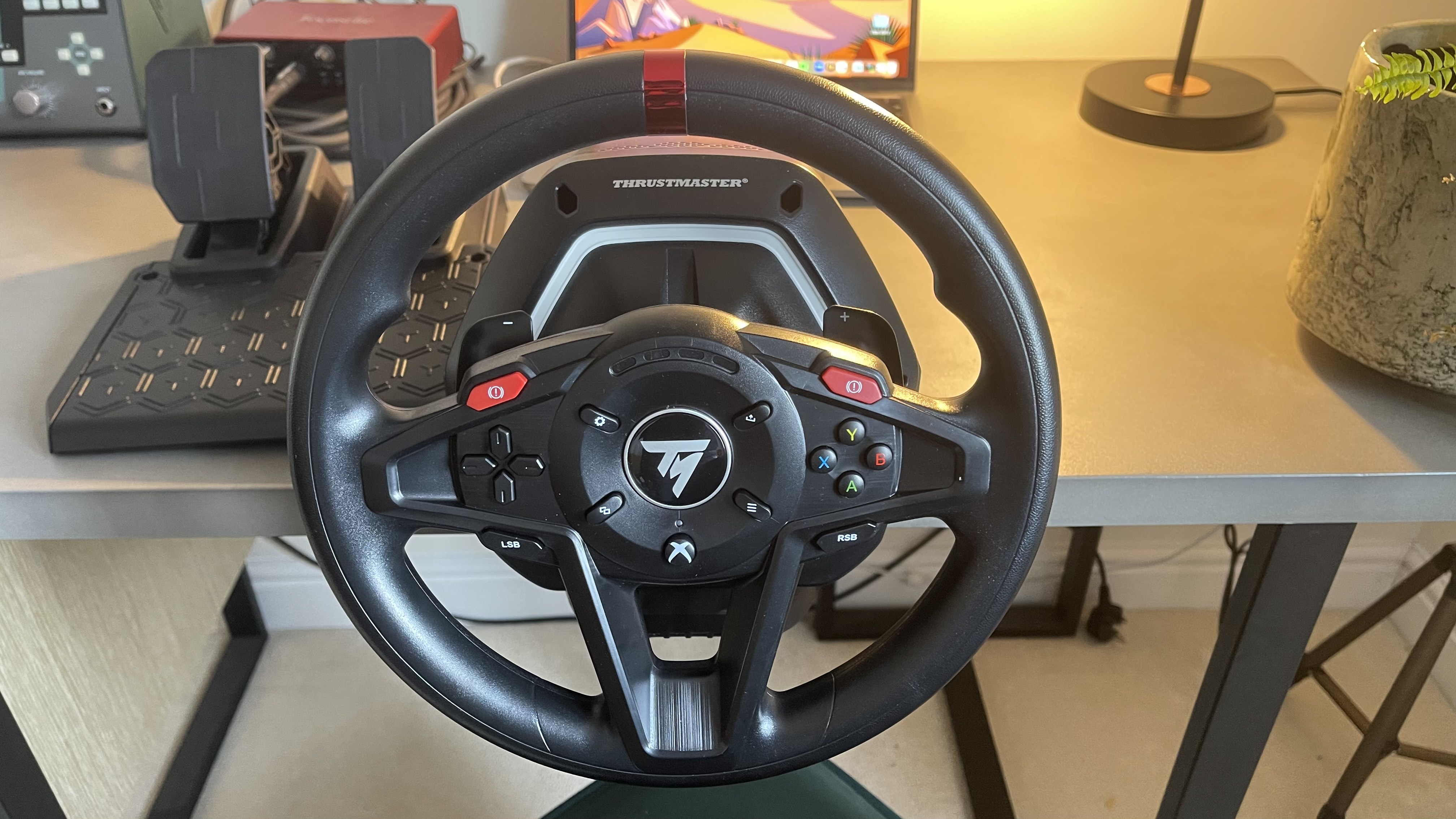
Design & features
The instant you pull the wheel and pedals out of the box, you understand that the T128 is about delivering a sim racing platform while looking for any and all opportunities to keep the costs down. That’s fair enough.
The giveaways here are the finish of the wheel, which is hard black plastic without any rubberised or pleather grip you might find on costlier models, and an exceptional small brake and throttle platform, again comprised of black plastic. That’s a notable difference to the existing T150 and TMX wheels in Thrustmaster’s existing range, both of which offer some form of grippy surface around the wheel at a similar price point to the T128.
Whereas higher-end models are a bit more modular in design - detachable wheels and independent servo units with optional handbrake and shifter add-ons - this T128 is an all-in-one proposition. The downside is that there’s no real upgrade potential down the line here, so if you decide to invest more in sim racing you’d need to buy a whole new unit rather than just swapping in some better pedals or a new wheel. The upside is considerable though - simplicity and affordability.

On the front of the wheel, you’ll find a gamepad-style d-pad and face buttons within easy reach of your thumbs if you’re driving at the ten-and-two position. The L2/R2/L3/R3 buttons are a longer stretch, but they’re still handy inputs for binds you don’t use so often. Headlights, pit stop request button, camera change - that sort of thing.
Right at the centre of the wheel are four more buttons and an LED rev indicator to aid your gear shifts, and on the rear, some satisfyingly clicky shifters. You can’t fault it for number of inputs.
Both the wheel and the pedals unit are exceptionally small, so if you’re a younger racer (or shopping for one) this is a good pick. Grown-ups with WWE-proportioned hands and feet might have difficulty finessing their inputs in such a tight space, though.
The look is functional above all else, but not without the odd flourish. The centre point indicator on the wheel is a smart red brushed steel effect, and the rev indicator might have been considered a higher-end feature only a few years ago and proves genuinely useful.
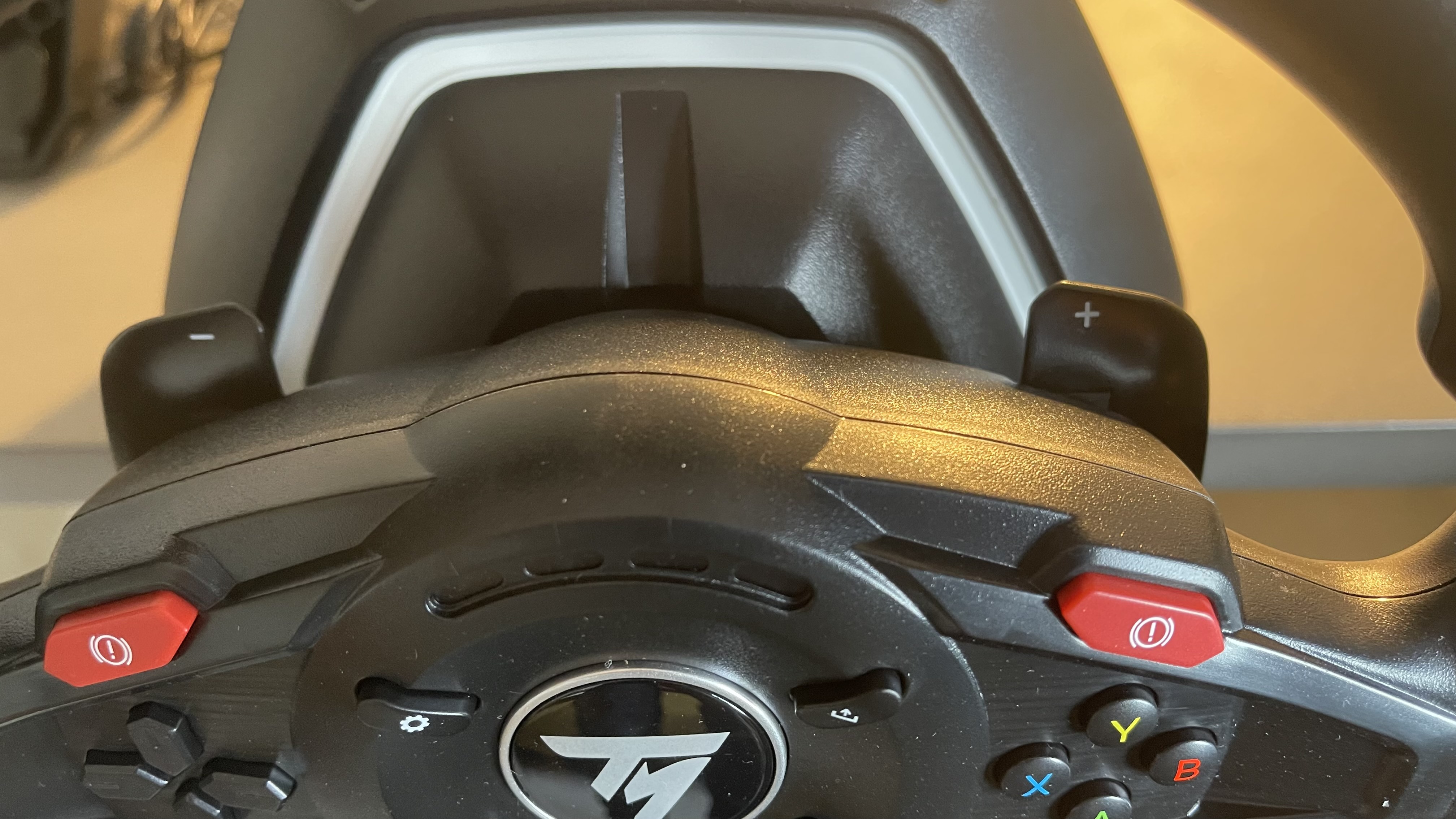
Performance
When it comes to actually wrestling to maintain control of a vehicle in-game, the lack of a grippy surface does become a problem. Particularly in longer sessions when your hands get a bit clammy, you long for some purchase. There’s an inexpensive homemade solution though: bicycle bar tape. About $10/£10 will get you a nice roll of grippy, cushioned tape to wrap around the wheel, and this elevates the experience no end. Seriously, try it.
The precision and detail of the force feedback here are roughly in line with the price point. Thrustmaster’s top-end servo units deliver incredible sensation, but a lot of that’s been shed here to achieve a cheaper unit. The T128 can’t match the Logitech G923 for convincing rumble and articulate feedback under traction loss or weight transfer, but it does give you enough to keep you informed. Putting in the laps in racing sims with a controller is, of course, totally doable and racers achieve some incredible times with only analog sticks and buttons, but even this entry-level wheel offers so much more detail and granular input than a PC controller or PS5 controller can.
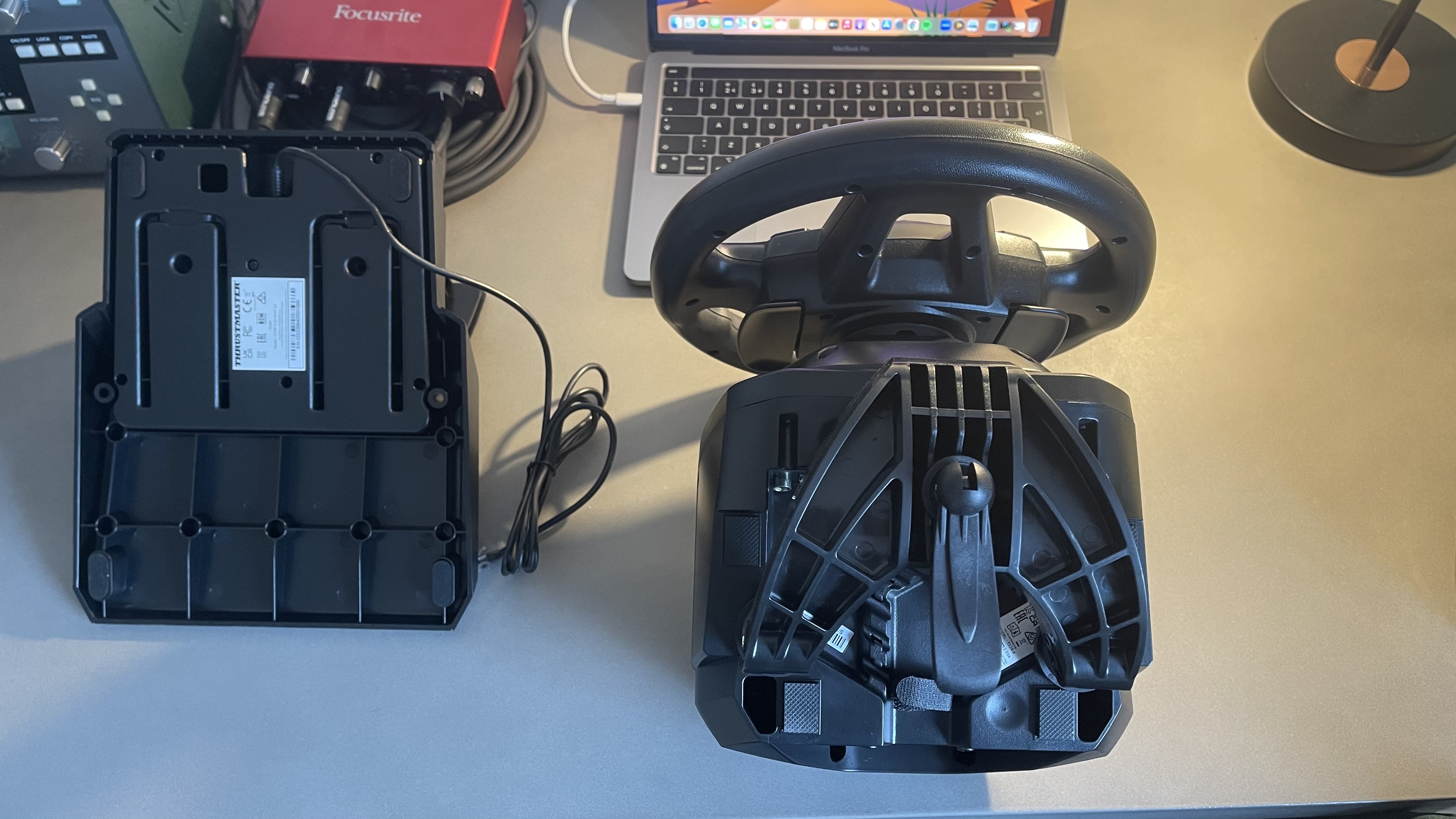
The pedals unit, however, has some serious problems. Not only are the throttle and brake pedals sprung extremely slack which makes finding a consistent brake biting point very difficult, but they’re also extremely close together, and that’s simply uncomfortable. Shoes, socks, regardless - you feel like you’re cramming your feet into a toy car.
Worse still, it’s so light and lacking in adhesion at the base that pressing on the pedals lifts up the front. This happens whether you have the pedals freestanding on your floor, or pressed up against a wall. And that’s really distracting, regardless of your experience level in sim racing or your size. Elsewhere the compromises for the price point make sense, but when it comes to the pedals too much has been sacrificed from your experience.
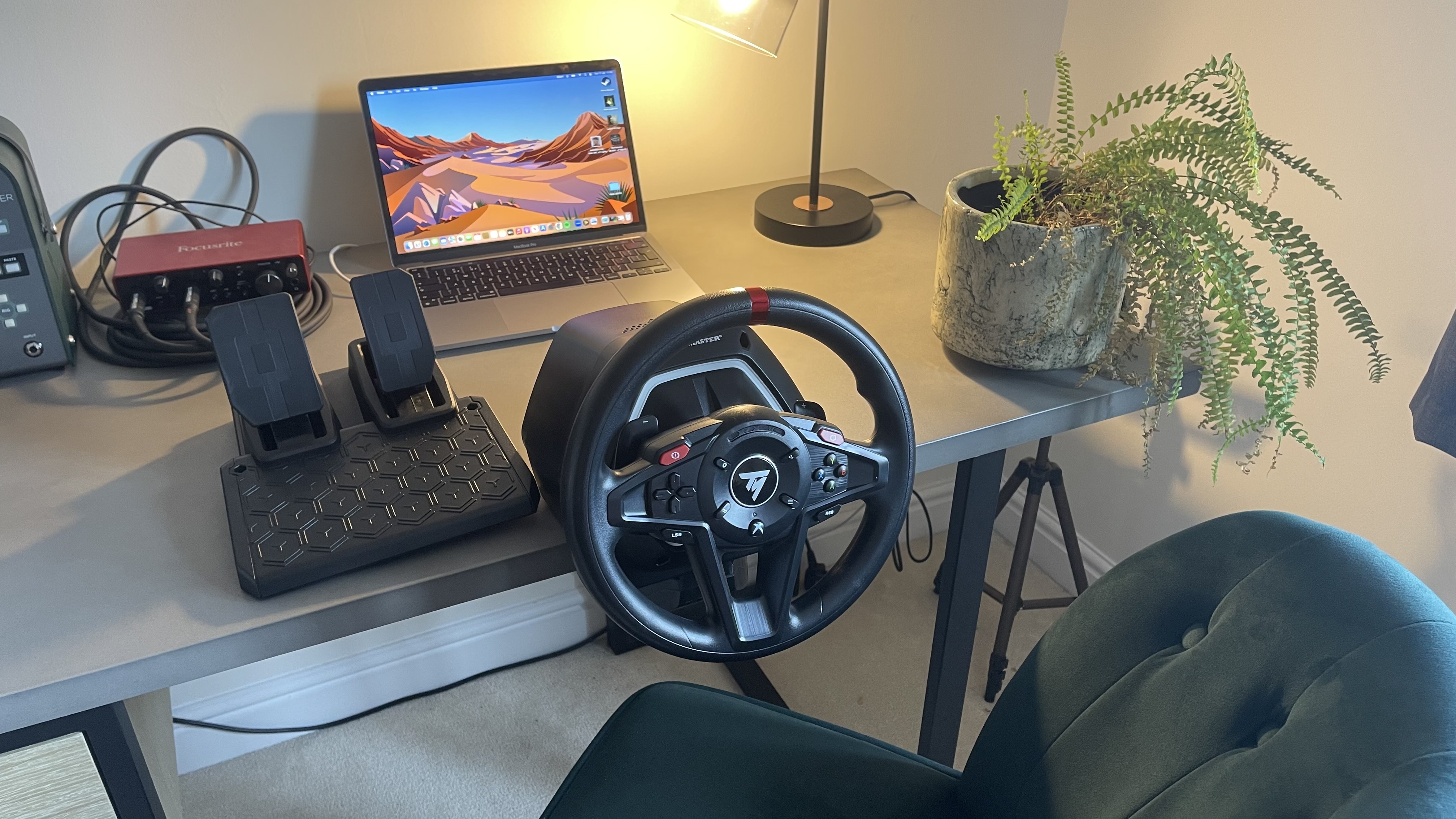
Should you buy the Thrustmaster T128?
Thrustmaster’s latest racing wheel can be a decent option for younger or beginner sim racers, but if you do buy one you’ll probably need to put in a bit more work to turn it into a comfortable rig. Spending a little more on a pricier option like Thrustmaster’s own TMX or T248 wheels or Logi’s G923 makes those problems disappear, but if you’re determined to keep costs down this T128 offers a taste of the benefits that force feedback wheels offer.
How we tested the Thrustmaster T128
We employ what we call The Rihanna Method here when it comes to testing racing wheels: shut up and drive. That means hotlapping for hours on end in ACC, F1 22 and Project CARS 2, but also tweaking the input settings in those games to try to find the sweet spot in force feedback strength, deadzones and the like.
The benefit of testing in several games is that you gain an appreciation of how much you’re feeling is coming from the individual vehicle or game engine’s handling model, and how much is the wheel itself. It’s particularly illuminating to try some precise open-wheeler stuff like an F1 game, then some driftier road cars where you’re slipping out of traction and balancing on the traction loss limit through corners.
Looking for other kinds of controller? Check out our guides to the best Xbox One steering wheel, as well as the best joysticks, and best Xbox Series X controller.
Phil Iwaniuk is a multi-faceted journalist, video producer, presenter, and reviewer. Specialising in PC hardware and gaming, he's written for publications including PCGamesN, PC Gamer, GamesRadar, The Guardian, Tom's Hardware, TechRadar, Eurogamer, Trusted Reviews, VG247, Yallo, IGN, and Rolling Stone, among others.
